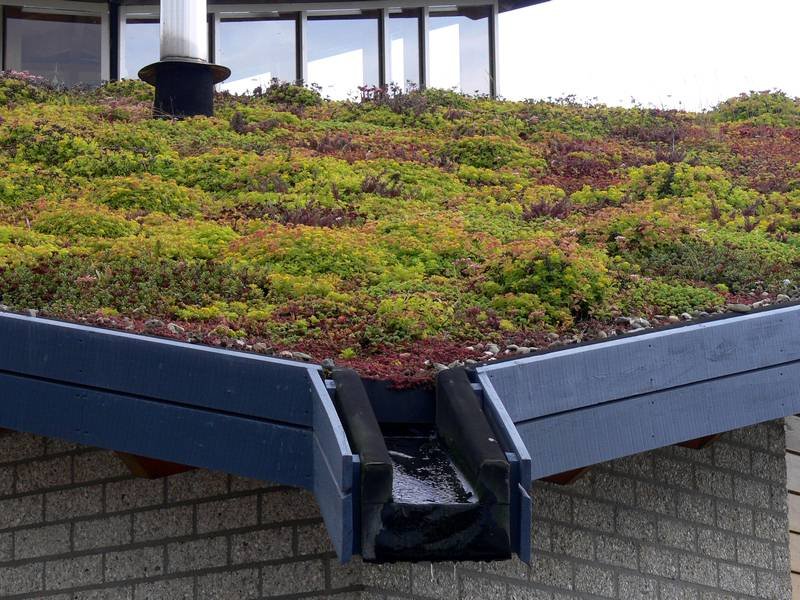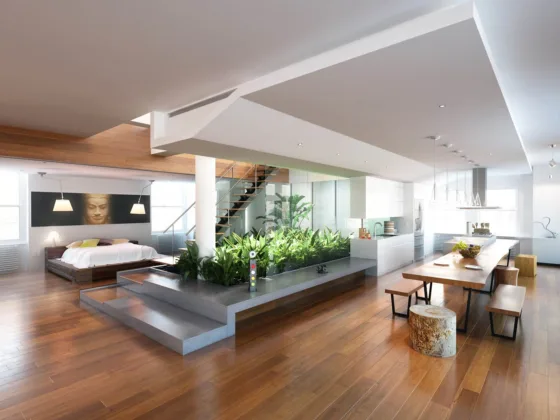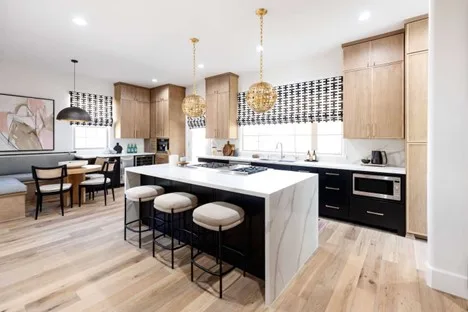Table of Contents Show
Creating a rooftop green garden is a great solution for all those living in urban areas, for those who don’t have a backyard, or enough space to create a conventional garden. These gardens can be beautiful and will certainly add a touch of color to any house or building, as well as to the greyness of the urban environment.

Apart from that, they are also very practical and beneficial to the environment, as well as to your home. Rooftop gardens mitigate the stormwater runoff, prevent leakages and moisture, provide good insulation, and they even create additional habitat for the local wildlife.
How to Turn Your Rooftop Into a Green Garden
Creating one is not very complicated, as long as you follow some basic instructions and principles, so let’s take a look at how you can turn your rooftop into a beautiful green garden.
First Things First – Is Your Roof Suitable for a Garden?
Before you start recreating your roof and planning a green garden on top of it, first you need to determine the suitability of your roof, to see if it is viable. Three important aspects need to be verified first: local ordinances, the durability and the slope of your roof.
Local Ordinances
It would be wise to check with your local authorities and relevant experts if there are any rules and regulations concerning rooftop gardens in your area. In some places, there might be certain building codes that don’t allow them due to some specific reasons, or that restrict them in some other ways: for example, in which city areas it is allowed, how big or extensive the gardens can be, or how they should be installed. The regulations are usually not very strict, but it is always better to be safe than sorry.
Roof’s Durability
To check the durability and proper suitability of the roof, it is always best to consult with an expert, such as an architect, a roofing contractor, or a structural engineer. They are professionals and will be able to tell you exactly what you can or cannot do.
The roof has to be strong enough and able to endure the additional weight of the garden. You must take into account that there will be several layers in it, at least three. These layers, along with the future plants, add significant weight and affect the stability and integrity of a roof.
Roof’s Slope
When it comes to the slope of your roof, it shouldn’t be too small nor too steep. When a roof is flat or with a small slope, there is a greater risk of water retention, which can lead to different damages and leaks. If, on the other hand, your roof is too steep there’s a possibility of the garden slipping off. Ideally, the slope should be no more than 40 degrees.
Install a Drainage System
Once all of the above aspects have been cleared and taken care of, you can start with the creation of your rooftop green garden. The first thing you need to do is to add proper drainage if you don’t already have one. Most quality roofing systems have one in place, but it should be mentioned nonetheless.
A drainage system consists of gutters and downspouts that allow proper flow of water from your roof down to the ground. Make sure you have gutters installed all around your roof, and that there is a downspout at the lowest part of it, which will ultimately let the excess water run down and off the roof.
Waterproof Your Roof
Another important thing to consider is to properly protect and waterproof your roof, to prevent any damage or leaks. The best thing you could do is to add a layer or two of protection beneath the plants.
The bottom layer, or the first one, should be a waterproof sheet that will prevent water from going through and protect your roof. It is important that it covers the entire surface and that it is properly installed, ideally as a one-piece sheet.
On top of that, it is recommended to add a second one that will help with the drainage or function as a drainage system. This layer will help direct the excess water into the gutters, or it can function as a kind of a buffer. It can be in the form of rubber mats or wooden decking, as well as made from pumice, mulch, clay, etc., and it will allow the water from the plants to drain more efficiently.
Add Soil
The soil you use for rooftop gardens will be slightly different than the regular garden soil, so be careful when choosing it. It should be as lightweight as possible, to keep the additional weight added to the roof at a minimum.
Apart from that, make sure to add soil that is low in organic content and nutrients to prevent unwanted vegetation from growing and spreading. This means that you should stay away from the commonly used peat and topsoil, and try to get one that contains more than half of inorganic material such as brick or clay.
Choose Your Plants Wisely
The plants you choose for your rooftop garden should be as resistant as possible, as well as tolerant to different extreme weather conditions. These plants will be much more exposed to weather that your regular garden plants, as they are on the roof and less protected. Therefore, try to grow those that will survive a lot of exposure to the elements and that don’t need a lot of maintenance. Some of the best solutions are succulents, sedums, and wildflowers such as yarrow, aster or sea thrift.
Must Read:
Watering Your Green Garden
An important thing to consider is watering. You can always choose to water the plants manually, but since they are on the roof, and very exposed to sun and heat, they will need a lot of regular watering. If your area receives regular rain, then you don’t have to worry because the rain will do the job for you and there will be very little need for additional watering.
If there is not enough rain, on the other hand, it is recommendable to install some drip irrigation system, to avoid watering them manually every day. Many gardeners use the one that is connected to roof-level spigots. It is efficient and will satisfy your plants’ watering needs.
Additional Ideas for Rooftop Gardening
If you wish to create a slightly different garden, rather than planting your plants in the soil on the ground, spread across your roof, you can create a container garden. The main principles and considerations are the same as explained above, only you will not plant them in the soil on the ground, but in different containers.
As containers, you can use bricks and cement block to create planters or even reuse old tire and rims and turn them into planters as well. You can make a cinder block rooftop garden, or use wooden logs as containers and planters, and get creative with them.
The good thing about container gardens is that you can arrange your containers in any way you want, you can use different materials for them and even create your own. You can get creative, put your imagination to work, and have a beautiful, as well as a useful rooftop green garden.
Author Bio
Mattea Jacobs is a freelance writer who mostly writes about both interior and exterior home design, and environmentally-friendly ways to improve homes. She is also a green activist and a mother of two beautiful sons. You can reach her on Facebook and Instagram.










